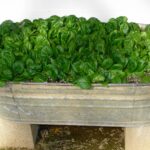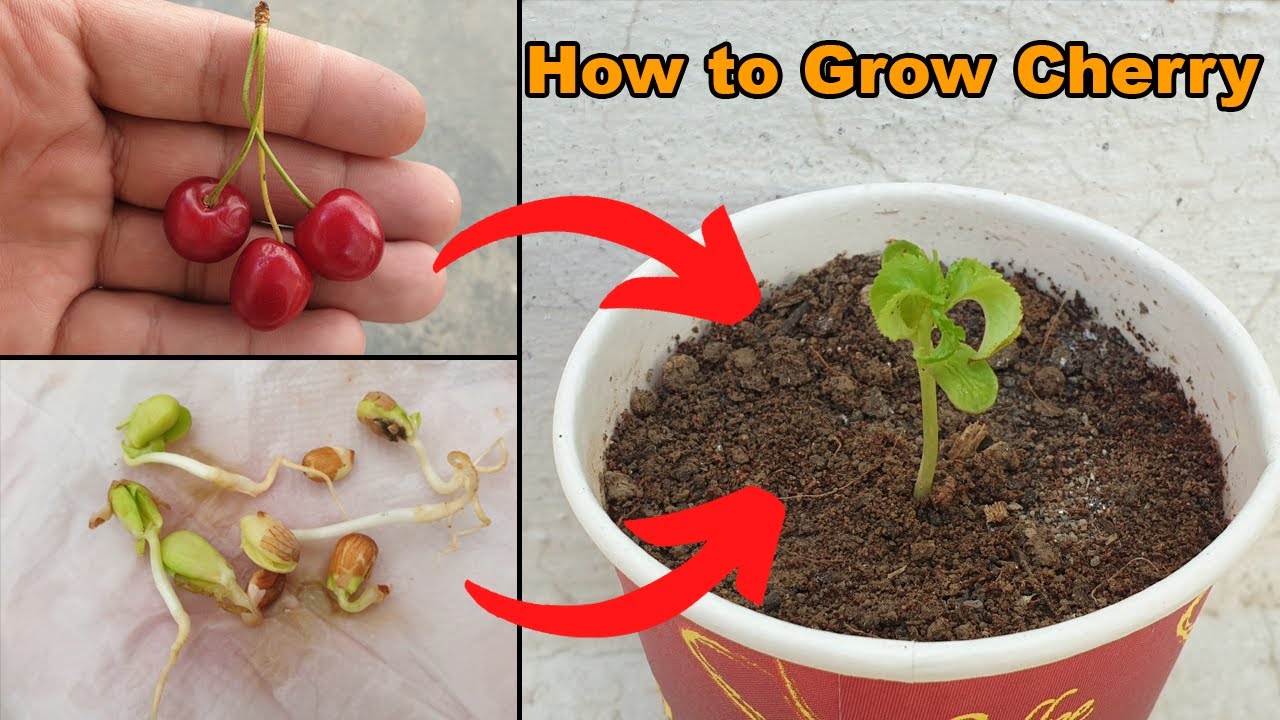Cherries are a delightful addition to any garden, offering a dual bounty of fragrant spring blossoms and juicy summer fruit. If you’re thinking about adding these tasty treats to your backyard, now is the perfect time to plant your first cherry tree. With the right approach, you can enjoy the sweet rewards in just a few years.
Planting and caring for cherry trees requires some knowledge and preparation, but the process can be straightforward and immensely satisfying. Whether you’re an experienced gardener or a novice looking to try your hand at fruit cultivation, this guide will help you get started on how to grow cherries effectively.
How Long Does It Take to Grow a Cherry Tree From a Seed?
Growing a cherry tree from a seed can be a rewarding process, though it requires patience. Typically, it takes a cherry tree about three to four years to mature enough to bear fruit when grown from a seed. However, for those eager to see results sooner, purchasing a young sapling can speed up the process.
It’s important to note that cherry trees grown from seeds may not produce fruit true to the parent variety. For a more predictable outcome, consider grafting or purchasing grafted trees, which can bear fruit in as little as two to three years.
Regardless of the method, the key to success lies in choosing the right variety for your climate and ensuring proper care throughout the tree’s life.
Growing Cherry Trees in Pots: Is It Possible?
For those with limited space, the good news is that cherry trees can indeed be grown in pots. Dwarf cherry trees are particularly well-suited for container gardening. Their smaller size makes them ideal for patios, balconies, and small gardens.

When growing cherry trees in pots, choose a container that’s large enough to accommodate the tree’s root system and has adequate drainage. Use a high-quality potting mix and ensure regular watering, as potted trees dry out faster than those in the ground.
Keep in mind that potted cherry trees will require more frequent repotting and pruning to manage their growth. With the right care, they can thrive and produce fruit comparable to their in-ground counterparts.
Do Cherry Trees Produce Fruit Every Year?
Once established, cherry trees should produce fruit annually. However, there may be variations in yield from year to year due to factors like weather, pollination, and tree health. Sweet cherries tend to have more consistent production, while acid cherries can be more variable.
To ensure yearly harvests, it’s crucial to provide consistent care, including proper watering, fertilization, and pruning. Additionally, protecting your cherry trees from late frosts and pests can help maintain a regular fruiting cycle.
Where Do Cherry Trees Grow Best?
Cherry trees favor temperate climates with cold winters. They perform best in regions with a specific number of chill hours annually, which are necessary to break the tree’s dormancy and trigger flowering and fruiting.
 How to grow Brussels sprouts
How to grow Brussels sproutsChoose a spot in your garden that receives full sun and has well-drained soil with a pH around 6.5. If your soil is less than ideal, consider amending it or planting your tree in a raised bed to ensure proper drainage and root health.

In colder climates, look for varieties that are cold-hardy and resistant to late spring frosts, which can damage blossoms and reduce fruit production.
What Time of Year Do Cherry Trees Produce Fruit?
Cherry trees typically produce fruit in early summer, with the harvest season running from June to August, depending on the variety and location. To maximize your harvest, it’s important to pick the cherries at the right time—when they are fully colored and slightly firm to the touch.
Picking cherries with the stems attached can help extend their shelf life, as can careful handling to prevent bruising. Remember that birds also love cherries, so providing some form of deterrent or protection, like netting, can help ensure that more of the fruit ends up in your kitchen rather than in the beaks of feathered friends.
How Deep to Plant a Cherry Tree?
Planting depth is crucial for the health of your cherry tree. The general guideline is to plant the tree at the same depth it was grown at the nursery. You can usually spot a color change on the trunk that indicates the previous soil line.
The hole should be twice as wide as the root ball to allow the roots to spread easily. After placing the tree in the hole, backfill with soil, water thoroughly, and apply mulch to preserve moisture and regulate soil temperature.
Proper planting depth ensures that the tree’s roots have the best chance to establish and access the nutrients and water they need to thrive.

How Long Do Cherry Trees Live?
With proper care, cherry trees can be a long-lived addition to your garden. On average, cherry trees can live for 30 to 40 years, though some varieties may live even longer.
To ensure a long and productive life for your cherry tree, focus on providing optimal growing conditions, including adequate sunlight, water, and nutrients. Regular pruning and pest management also contribute to the tree’s longevity and vitality.
Choosing the right variety for your region and ensuring it’s grafted onto an appropriate rootstock will also play a role in the tree’s lifespan and fruit production.
 How to grow spinach: your go-to growing guide
How to grow spinach: your go-to growing guidePreguntas relacionadas sobre la plantación y cuidado de cerezos
What Month Is Best to Plant Cherry Trees?
The best time to plant cherry trees is in the early spring or late fall, avoiding times of extreme cold or heat. This timing allows the tree’s roots to establish before the growing season or during dormancy, respectively.
In regions with milder winters, planting can occur during the winter months as well. Always ensure the ground is not frozen or waterlogged when you plant.
What Not to Plant Next to Cherry Trees?
When choosing companions for your cherry tree, avoid plants that compete for nutrients or attract the same pests. For example, planting members of the nightshade family, such as tomatoes or potatoes, near cherry trees can increase the risk of disease transmission.

Instead, consider planting complementary species that can deter pests or enrich the soil, like marigolds or legumes.
How Do You Prepare Soil for Cherry Trees?
Preparing the soil for cherry trees involves ensuring good drainage and the right pH. Amend heavy clay soils with organic matter to improve structure and drainage.
Conduct a soil test to determine the pH and nutrient levels, and adjust accordingly. Aim for a pH around 6.5, adding lime if the soil is too acidic or sulfur if it’s too alkaline.
Where Is the Best Place to Plant a Cherry Tree?
The best place to plant a cherry tree is a location that receives at least six hours of direct sunlight daily and has well-drained soil. Avoid low spots where frost can settle or areas with strong winds that can damage blossoms and developing fruit.
Also, provide enough space for the tree to grow—both in canopy and root system—without competing with other plants or structures.
Check out this insightful video on how to grow cherries and see these tips in action:

 How to grow sunflowers: top tips on planting and caring for these summer beauties
How to grow sunflowers: top tips on planting and caring for these summer beautiesIn conclusion, growing cherries is a process filled with anticipation and reward. By following these guidelines and providing your cherry trees with the care they need, you’ll be well on your way to enjoying your own home-grown cherries. Remember, the key to success lies in choosing the right variety, planting at the optimal time, and providing consistent care throughout the tree’s life.

